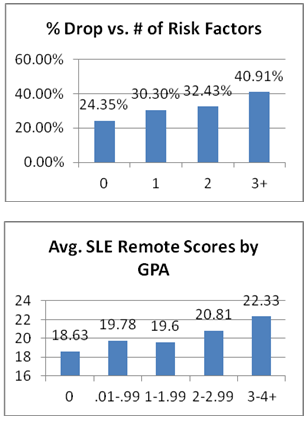There is a shift in education towards online learning.
There are a lot of advantages to distance education that benefits students, teachers, and institutions. Students don’t have to relocate. Online schedules are often flexible. Schools can recruit the best talent from a worldwide pool. Modern technology is often faster and easier to use than traditional teaching methods.
But there are also many challenges. The engagement level for online students may not be as high as traditional students. Isolated learning can be difficult. There are no “hands on” lesson opportunities for your teachers. Learning new technology might be daunting for educators and learners.
If not implemented correctly, the challenges of distance education can seem to outweigh the benefits. In fact, the Department of Education tells us that the
dropout rate for distance education students is 8% higher than it is for traditional or blended students. If a significant portion of your student body is attending online, this can have a
dramatic impact on your retention rate and other educational outcomes.
It’s absolutely critical that you spend some time evaluating your applicants before enrolling them. But how can you get to know them, when you never see them face to face?
We conducted a study with a large online college, and the findings give us insight into some things you can do to help lower the likelihood of your online students dropping out.
Be Selective
You get a wide variety people applying to your school. Not all of them are going to be able to handle the unique learning environment that is distance education.

- Interview them in a similar manner to your campus-based students, but ask them questions that make sense for online learners. They are going to have a different set of challenges. One item that impacted online learners more than traditional learners was their access to the Internet. Make sure they have it!
- Evaluate their risk factors. Our study found that the more risk factors present, the higher the likelihood of dropout.
- Assess their ability to actually learn the material – you don’t want them to struggle. The study also showed that cognitive ability is directly correlated to GPA and is a strong predictor of success within a program. Want more info on cognitive ability? Check out Jen Garrow’s blog.
- Make sure they have the basic English and math skills needed to handle all aspects of the curriculum, whether it’s reading the material, understanding test questions, writing in the discussion forums, or doing calculations. And be prepared to offer remedial classes for those who are enthusiastic about going to school but may be a bit rusty on some of their skills.
- Admit only the students that meet the program requirements and are ready to commit to an education. A high level of commitment is vital to success.
Focus on the Programs that Lead to Jobs
One of
our earlier posts talked about the large number of employers that are having a hard time finding workers with the right skills. Focus on the careers that are hot, and train your students in those needed skills. They will have a much better chance at finding employment when they complete your program.
Keep Students Engaged
Student engagement has a
big impact on outcomes. We recently surveyed over 4,000 students, graduates, and dropouts, and discovered many factors that contribute to student success. Even little things like the teacher knowing their name, having a place to go for help, and making sure friends and family are on board with their education can make a difference. Check out some key points from the study
here.
By enrolling students who can meet the demands of your program and the online learning environment, as well as limiting (or broadening) your program offerings to those fields that are in demand, you can keep your students engaged and stack the odds in your favor. And more importantly – in your students’ favor!



